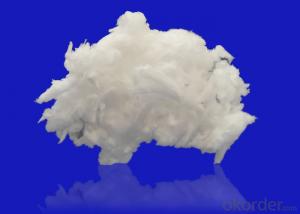Composite Honeycomb Sandwich Panels: Innovation in Design
It’s fascinating how innovation can transform the way we perceive materials and their applications. Take composite honeycomb sandwich panels for instance—a remarkable blend of strength, lightness, and adaptability. These panels are not just a product of engineering; they’re a testament to human ingenuity and creativity.
The Essence of Sandwich Panels
Imagine a structure that combines the best of two worlds: the rigidity and strength of a solid surface with the lightweight properties of a hollow core. That’s the basic concept behind sandwich panels. The outer layers, or faces, are made from strong, durable materials like carbon fiber or fiberglass, while the core is a lightweight honeycomb structure that provides insulation and resistance to impact.
Versatility at its Finest
One of the most appealing aspects of composite honeycomb sandwich panels is their versatility. They can be tailored to fit a wide range of applications, from aerospace to automotive, marine, and even architecture. Whether it’s for structural support, thermal insulation, or soundproofing, these panels deliver exceptional performance.
Engineering Marvels
The engineering behind these panels is nothing short of a marvel. The honeycomb core’s geometry allows for incredible strength with minimal material use. This means that while the panels can withstand significant loads, they remain lightweight—a critical factor in industries where weight can make all the difference.
Aerospace and Beyond
In aerospace, every gram counts. That’s where composite honeycomb sandwich panels really shine. They are used in aircraft construction to reduce weight without compromising on safety or durability. The result is more fuel-efficient planes and a lower carbon footprint.
Sailing Through the Seas
Not just for the skies, these panels also make waves in the marine industry. They are perfect for boat construction, offering buoyancy and resistance to water absorption, which is crucial for long-term durability in the harsh marine environment.
Speeding on the Road
The automotive industry has also embraced the use of composite honeycomb sandwich panels. They contribute to the overall performance of vehicles by reducing weight, enhancing fuel efficiency, and improving safety through their high-strength properties.
Green and Sustainable
In today’s world, where sustainability is key, composite honeycomb sandwich panels are a green choice. They are made from recyclable materials and have a lower environmental impact compared to traditional materials. This eco-friendliness is a significant advantage in the push for greener technologies.
The Art of Design
Designing with composite honeycomb sandwich panels is an art form in itself. Engineers and designers work hand in hand to create structures that are not only functional but also aesthetically pleasing. The panels can be molded into various shapes and sizes, allowing for unique designs that push the boundaries of conventional architecture.
Innovation in Action
The innovation in composite honeycomb sandwich panels is not just about creating something new; it’s about improving existing solutions. They are constantly being refined and adapted to meet the evolving needs of various industries.
The Future Looks Bright
As we look to the future, the potential applications of composite honeycomb sandwich panels seem almost limitless. From space exploration to renewable energy, these panels are poised to play a significant role in shaping the innovations of tomorrow.
Embracing the Innovation
So, how do we embrace this innovation? By staying curious and open to new ideas. By understanding the benefits and limitations of composite honeycomb sandwich panels. And by pushing the envelope to explore new ways to incorporate them into our designs and projects.
In Conclusion
Composite honeycomb sandwich panels are more than just materials; they are a symbol of human innovation and our relentless pursuit of excellence. As we continue to explore and develop new applications for these panels, we are not just building structures—we are building a better future.

